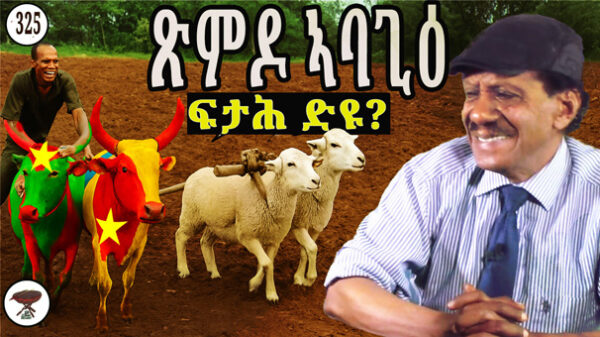Eritean Fiat Seicento And Ethiopian Volkswagen

Fiat Seicento (and Cinquecento) was a cute Italian car whose old version is now antique. Driving schools loved it and favored it to any other car. Asmara had a considerable number of the car, Keren had one owned by Alamin, the famous driving trainer. Later on, Alamin trained my friend Yacob and made him a trainer.
In Addis Ababa, the driving schools preferred Volkswagen Beetle. In the nineties, the number of VWs (or Fau Ve, as the Germans call them) was probably bigger than that of the inhabitants of Addis Ababa. Does that sound like an exaggeration? Well, that is how it appeared to visitors like me.
In the past all you need to get a driving license was learning how to handle the steering wheel, the clutch, the gear shift, and the accelerator. Nobody needed to learn anything about the brake pedal, it comes natural. But if anything happened to the engine, drivers pretended they knew how to fix it and opened the hood and stared at the engine. If someone approached them, they murmured a few Italian street words, “Miseria, etta acceleratore….” Upon hearing the Italian words, the curious onlookers would assume the driver is a Mechanico Fino, but alas, “the car needs pezzi di recambio”, spare parts. It is not the driver’s fault!
The Fino Mechanico
In Eritrea, where the ratio of mechanics to cars was four to a car, if a Seicento stalled in the middle of the street, someone would certainly come and clean the battery heads, then tell the driver: “Etti cambio in-folle gbero’mo, ates’ayya. The car will be fine again, that is if it didn’t stop because the gas tank was empty.
In Addis Ababa, if a mechanic doesn’t speak Tigrinya they didn’t trust he was one. And they surely got a Tigrinya speaking mechanic from a bar on any corner of the street. The mechanic would sigh, “Mama Mia, nkhid bel.” They are never alarmed and downplayed the most serious engine problem. But once they open the hood, they would find a way to fix it, even by scavenging the street for a rusted coil, a crown cork—anything would be put somewhere under the hood and the car would run again.
In a garage of an Eritrean mechanic, I once saw a beaten up vintage Mercedes Benz in a bad situation. I felt sorry for it because I didn’t think anyone would be able to fix it, even the person who manufactured it. The mechanic told me it used to be one of Haile Selassie’s fleet—it was transporting sacks of onions from the countryside to the market in Addis Ababa. When the Derg detained the King, they took him away from his palace in the favorite Ethiopian car: Volkswagen Beetle.
The driving rule was simple: drivers didn’t need to know what goes under the hood, if they can drive, it was fine. The problem is, when it stops, they become helpless and were immediately possessed by Italian fury.
Autoscoula Marxista
During the struggle era, for the most part, political orientation and basic Eritrean history, with heavy doses of Marx, was a requirement before one carries the gun and joins the combating forces. The common orientation served as a reference whenever a debate arose, and it was settled based on the orientations the people received. If you express a different view, or question the orientation, your sanity, and loyalty, was questioned.
I sometimes wonder: what is the reference for the current struggle? Could the lack of a common orientation be the reason behind our fragmentation and disagreements? I do not have an answer, but I have a feeling something is missing.
Observing the state of the resistance (and opposition) to the Eritrean regime, one cannot help but think of them as people driving a Seicento, and who have no clue what is under the hood let alone how to fix it. Most of the activists, the leaders and followers, seem to be well trained drivers, but with no knowledge of how to fix the engine. If the the engine of the opposition car stops for a minor breakdown, they open the hood and murmur some Italian words hoping somehow it will be fixed on its own. And what is left of the old Tigrinya speaking mechanics of Addis are not as good as those of the old days. That is why you see all the VWs of the opposition stalled, parked on every corner of Addis, almost rusting!
In the Diaspora, the opposition have imported all the Seicentos from Eritrea: everyone who has a Seicento is stuck with his own car, and gives it a flashy name: Autoscoula Democratica, etc. And they can hardly take more than three people along with them—that seems to be the requirement to start a driving school. Unfortunately, no one has dared to import a SETAEO, or Hajji Hassen bus to take more passengers.
In the nineties the offspring of Seicento made a comeback “to celebrate the 50th anniversary of the original model.” The redesigned car is flashy, and cuter than the old one, yet, I cannot accept it as anything but a car fit for driving schools only; it cannot accommodate more than two American sized people; you can only pretend you are comfortable in it, even if you sit alone on the backseat and distribute one-dollar bill just like Haile Sellassie used to do. But the Seicento can serve the needs of Eritrean Diaspora opposition very well, we might not need more than thirty of them: Each Seicento can accommodate the leadership and the entire members of any of the organizations that were given driving licenses by the Ethiopian government. I could have wished for a bus, but as I said, the PFDJ has confiscated all the SETAEO buses!
Through The Streets Of Asmara
This ignites a nostalgic memory; I remember Edaga Hamus, busy with buses ferrying people to and from Asmara. I remember the Skunis, the pickpockets and the swindlers who stayed there all day to make an indecent living! A short distance from there, I remember the winding road of Abba Shawl, where women stood in front of doors selling, well, “meat”. On the opposite side, a short distance walk, rubbing shoulders with more classy swindlers, you meet pickpockets promoted to serious robbers, then pass by the famous Babylon Square, and proceed to the symbol of the Italian authority, Comisariato Hamasen, where you find classy women standing in front of more decent one-room houses, and selling, well, more meat though a bit expensive. A bit further, walking through noisy bars serving American servicemen and well dressed Eritreans, places like Wigwams, Copacabana and others where, again, one finds the usual crowd of swindlers, pimps, and women selling more expensive meat alongside liquor.
It is from observing these sights that I learned of the words Skunis, and Wedini. Incidentally, for some reason I cannot explain, I find the characteristics of Wedini and Skunis fits most PFDJ operatives and supporters.
Pressured by traditional norms, I never uttered the feminine equivalent of Wedini and Skunis, pending a serious study though, many already have an ideas about their female equivalents.
Sometimes when I meet older people I become curious and imagine what they did in their young age! I find out that some were nurses, footballers, carpenters, clerks, drivers, teachers, bankers and many other professions. I have yet to find anyone who would tell me “I was a pickpocket.” And I have yet to find any woman that would tell me, “I sold meat from a one-room house.” Where did all of them go?
Recently a friend asked why the PFDJ festival was dominated by women.Then he answered his own question: “Isaias’ has a considerable support among women.” But why is that? Do we just drive the Seicento or try to find out what is under the hood?
I posed the question to a few people whose judgment I trust. My question was specific: can you give me the profile of an Isaias’ supporter among women?
The following categories are what I found:
- Those who have toiled so much and invested so much on the PFDJ starting from the struggle era and they are not willing to throw away their financial and emotional investments.
- A few who have genuine conviction that the PFDJ is the best that Eritrea had and could have—true believers.
- Women who are harmless but, similar to the men, they are possessed by demons that demand dancing events where one can display glittering gold ornaments.
- The “silent majority.”
- The noisy and combative among them are the equivalent of the Wedini and Skunis in the men’s department.
The Deaf-Mute, Dead Conscience “Majority”
I cannot stand the mention of “silent majority” or silent men and women; I am not interested in silent people, majority or minority, because I do not have the obligation to wake people who consciously went to sleep. And I do not think the opposition or resistance can do much more than what has (and is) being done. Those who hide behind the “silent majority” veil do not need anyone to inform them about the situation in Eritrea, every Eritrean is informed enough to side with the forces of justice, or the PFDJ, or continue the slumber. Action starts from the self, conscience is within each person. No one is obliged to do more than his share, or his ability.
Activists cannot bear the responsibility of instilling conscience in those who choose “quietism” in the face of all the sufferings that Eritreans are going through. It is absurd to blame others for a choice one makes. No one owns the opposition or resistance, it is an open field that attracts those who are willing to fight against injustice. One can cooperate with others, and if not, they can drive their own Seicento, and not blame others. How about buying a loud alarm clock? Maybe the one on Catedrale!
Describing the failure of the opposition in attracting women, a now-deceased senior official explained that the PFDJ doesn’t engage women on the intellectual level, but they use the catch-phrase Addetat. Recognizing Eritrean women’s relatively low literacy rate and political consciousness, the PFDJ classifies the entire womenfolks as Addetat and addresses their emotions. He said, “women are the most disadvantaged social group and the most illiterate, marginalized, and the least capable of processing information.”
Another senior official explains: Messages focusing on freedom of expression and association reverberates less in the minds of Addetat and it is easier to manipulate them.
The organized political organization should worry about that and take it seriously. If they don’t, they will remain inconsequential and weak—and it will not bode well in the future. Those who are so worried about the so-called “silent majority” can form entities that solely focuses on waking the sleeping crowd: specialization. But activists who are in the fight to defeat the extortion and misrepresentation by the never-ending PFDJ festivals should carry the fight the way they carried it in Bologna, Germany, Sweden, the Bay Area and other places. But beware, defeating them shouldn’t be replacing them with the same mannerism, attitude, and values: limited to drums, dancing, and binge drinking! A person who goes out from the PFDJ festival into a gathering of the Justice forces should be able to discern the difference in the venue, not be confused on which is which.
The PFDJ’s messages are tailor made for different people and different classes, unlike the opposition that doesn’t have such segmentation when delivering its messages.
The situation in the Diaspora where women are generally more educated and more sober, is different than that of Eritrea. Yet, the opposition camp is a man’s land, women are absent; but blaming men for their absence is unpalatable. Unfortunately, though most Eritreans are timidly silent at best, and consciously bystanders at worst, not discounting the few vocal and effective and active elements, the PFDJ has made “The face of the [PFDJ drum] junkie … the dominant image of the Eritrean Diaspora women.” It is effectively exploiting and using them in festivals and parades. But those few junkies do not represent my mothers and all the other decent Eritrean women I know. They don’t represent the brave women I struggled along, or my allies, the women in the current struggle, so many to name. The cheap junkies represent their cheap self and cheaper PFDJ. Political and social outcasts cannot represent decent human beings, and they should be defeated just like any enemy. I am suppressing the urge to spell the words that describes them, I am resisting it.
The strategy of the justice forces should remain as clear as ever: defeat the PFDJ everywhere. Just like the PFDJ festivals are being defeated decisively in most places, the few remaining outfits should also be defeated in order to defeat the PFDJ mother ship.
A few women activists lament, and a few male activists gloat, criticizing Eritrean women for not being outraged as they should while witnessing hundreds of children dying. They expect them to be as militant as the women of Argentina who made history by carrying images of their children, and forcing the world to pay attention to their plight. They forget that the general consciousness among Eritreans is not as high as that of Argentinians at the time, and that Argentinians were not uprooted Diaspora activists, but a social group living in Argentina. Regardless, it is sad (and not correct) that Diaspora women should be defined by the few outcasts who should be shamed and defeated.




Awate Forum